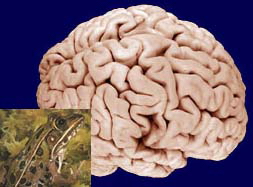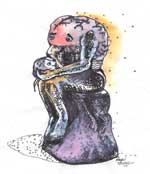Serendip is an independent site partnering with faculty at multiple colleges and universities around the world. Happy exploring!
BBI 2007 Session 6

|
|

|
BRAIN AND BEHAVIOR INSTITUTE 2007 |

|
Playing with Action Potentials
(more on neuronal membranes being/becoming "leaky" and how/why that leads to action potentials)
Some other useful links:
Neurons and electrical potentials
http://www.students.stir.ac.uk/biology/intro/intro.htm
AP Animation
http://psych.hanover.edu/Krantz/neurotut.html
Kimball Biology Webpages
http://users.rcn.com/jkimball.ma.ultranet/BiologyPages/C/CNS.html
http://users.rcn.com/jkimball.ma.ultranet/BiologyPages/P/PNS.html#sensory-somatic
Neuroscience for Kids
http://faculty.washington.edu/chudler/introb.html
AP Animation
http://outreach.mcb.harvard.edu/animations/actionpotential.swf
AP propagation
http://www.blackwellpublishing.com/matthews/actionp.html
Synaptic Transmission
http://www.blackwellpublishing.com/matthews/neurotrans.html
Further thoughts, questions, extensions, ideas in forum below ...



Comments
Thurs. morning conversation
membranes
Action Potentials
The Treshold of Pain
Playing With Action Potentials
neurons
Leaky Membranes Response
neuron thresholds
Post new comment